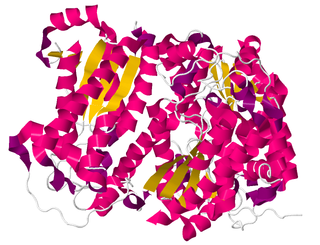| beta-diketone hydrolase | |||||||||
|---|---|---|---|---|---|---|---|---|---|
| Identifiers | |||||||||
| EC no. | 3.7.1.7 | ||||||||
| CAS no. | 97955-12-9 | ||||||||
| Databases | |||||||||
| IntEnz | IntEnz view | ||||||||
| BRENDA | BRENDA entry | ||||||||
| ExPASy | NiceZyme view | ||||||||
| KEGG | KEGG entry | ||||||||
| MetaCyc | metabolic pathway | ||||||||
| PRIAM | profile | ||||||||
| PDB structures | RCSB PDB PDBe PDBsum | ||||||||
| Gene Ontology | AmiGO / QuickGO | ||||||||
| |||||||||
In enzymology, a beta-diketone hydrolase (EC 3.7.1.7) is an enzyme that catalyzes the chemical reaction
- nonane-4,6-dione + H2O pentan-2-one + butanoate
Thus, the two substrates of this enzyme are nonane-4,6-dione and H2O, whereas its two products are 2-pentanone and butanoate.
This enzyme belongs to the family of hydrolases, specifically those acting on carbon-carbon bonds in ketonic substances. The systematic name of this enzyme class is nonane-4,6-dione acylhydrolase. This enzyme is also called oxidized PVA hydrolase.



